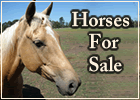

Developing Leadership
The most prevalent problem I find when working with horses and owners in Europe is, not surprisingly, the same major problem I find in the US, the lack of both good leadership and a respectful relationship with their horse.
I often ask my clients, “Is there a difference between being good rider and being a good horseperson?” Absolutely! Which would you rather be? Their intention to this point has generally been to be a good rider. I want them to become an excellent horseperson so that they can enjoy the benefit of being a good rider that will come as a result of developing and refining their horsemanship skills.
Many times I see an imbalance in horsemanship. For example, there are many good riders with blue ribbon winning show horses or solid trail horses but on the ground, this same horse is dragging his owner around by the lead rope or crowding into his space. The horse may be hard to catch, hard to load in the trailer, won’t stand still to be mounted or holds his head high when you are trying to put on the bridle.
Many of these owners are accepting this poor behavior and doing whatever it takes to get along with their horse.
We all love our horses and want to have a great relationship with them. Love alone doesn’t necessarily build the best relationship. It takes communication and leadership. Many years ago, my wife and I recognized the analogy between being a parent who consistently teaches, trains, loves and disciplines their child. You set boundaries for their behavior and actions to protect them. In the same way, we are the parent in the relationship with our horse. All of our hopes for our horses’ future and our relationship together should be positive and with great expectancy. We want the very best for our horses!
If the horse owner could become the type of leader who is worthy of their horse’s respect and trust, they would be amazed at the change in their horse’s attitude and how much lighter and more responsive he will become.
If the horse knows he has a confident, consistent leader he will be much more at peace with the human and within himself.
How does one become this type of leader for his horse? It has been an exciting revelation to my students to discover that this is not a mystery but is a skill possible for everyone to acquire! The Six Keys to Harmony, are six essential ground exercises that can be used to establish the rider’s leadership position, gain the horse’s attention and determine how he is responding. The exercises will build the horse’s respect and trust for the owner and help the horse be calm, thinking and willing. They will increase his coordination for precise and fluid movements. After accomplishing the exercises on the ground, they can then be effectively performed while mounted. These exercises will prepare both horse and rider mentally, physically and emotionally for a more successful and enjoyable ride.
Most people just bring their horse out of the pasture, saddle them up, hop on and ride, hoping everything turns out ok. Sometimes it does and sometimes it doesn’t. If they could take 10 minutes to prepare their horse to insure a safer ride with lighter responses from their horse, wouldn’t it be worth that 10 minutes?
This short time of ground work before riding, is a beneficial transition time for the horse, from being out in the pasture to having the rider mounted and making requests of him. This gives him a chance to focus on the rider and the job at hand.
These six exercises remind the horse of the cues the rider will be using mounted to ask for almost all maneuvers – go, speed up, slow down, stop, turn left and right on the front and the hind, move sideways and back up. Then once the rider is mounted their horse is already prepared to respond lightly to his cues.
The most important benefit of performing the Six Keys to Harmony with a horse is to establish the owner’s leadership position with their horse and build a relationship of mutual trust and respect.
By reviewing these essential exercises with the horse before each ride, the rider will be able to mount up with the confidence of knowing his horse is focused on him and responding to his instructions. The rider’s confidence will be conveyed to the horse and the horse will be at peace under the rider’s good leadership.
Many of my leadership building and communication techniques with horses, were developed as a result of my time spent observing wild horse herds when I lived in Wyoming. The intricate social structure and detailed communication within a wild horse herd are amazing to witness. It is quite evident that the respected horse leader represents the place of safety and comfort amongst the wild herd. My goal is to help horse owners become this type of effective leader, one who can instill a sense of trust and respect in his horse, by learning and developing the communication skills that will make him successful.

Ed Dabney is an internationally acclaimed clinician, presenting horsemanship and riding clinics all over the US and in Europe. In 2007, Ed was named Champion of the East Coast Trainer Challenge Series by Equine Extravaganza. Ed was honored to have been selected by the University of Georgia to teach their senior level Young Horse Training course.
His training articles have appeared in many major national magazines. Ed produces instructional videos and the “Gentle Horsemanship” TV program which has been seen on RFD-TV.
Ed's blending of natural horsemanship and classical equitation has made an indelible mark with students all across the United States and now also in Europe, drawing the attention of serious riders searching for the lightest touch and the deepest connection with their horses irrespective of breed or discipline.


